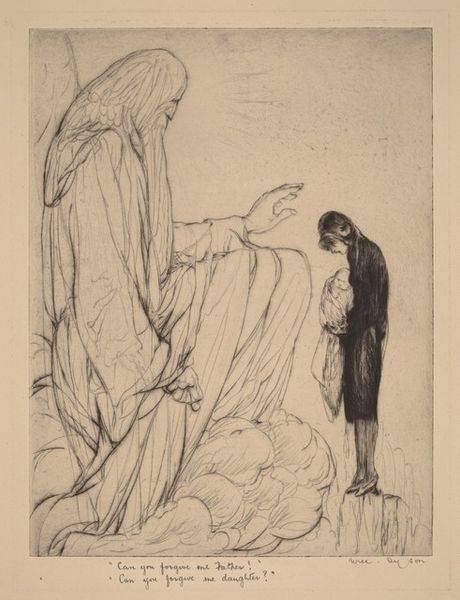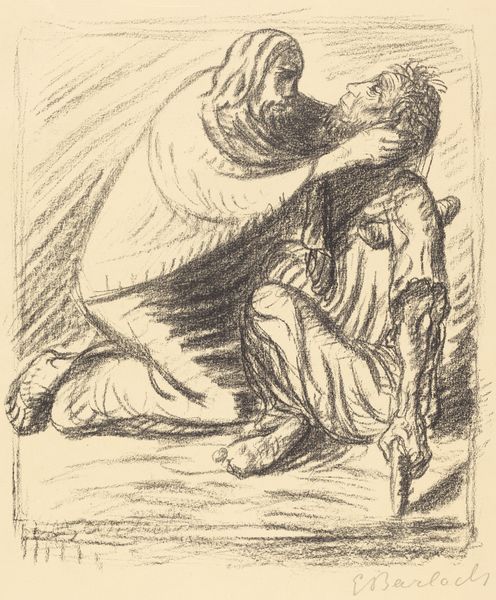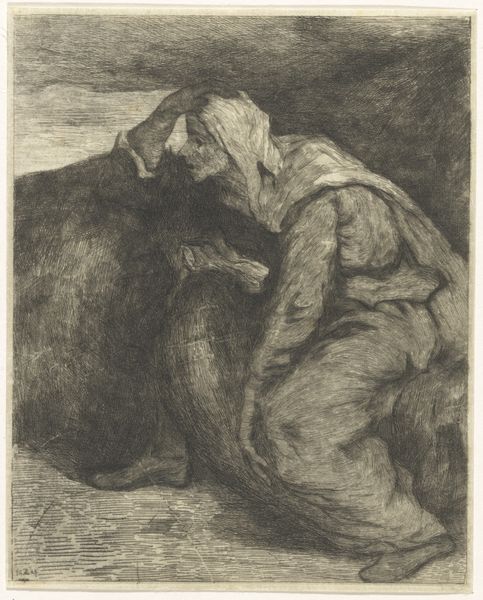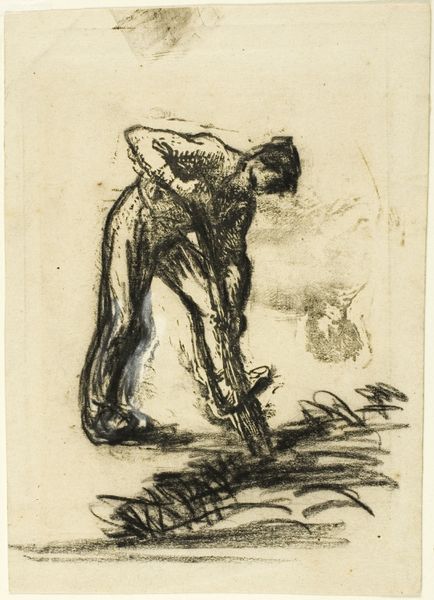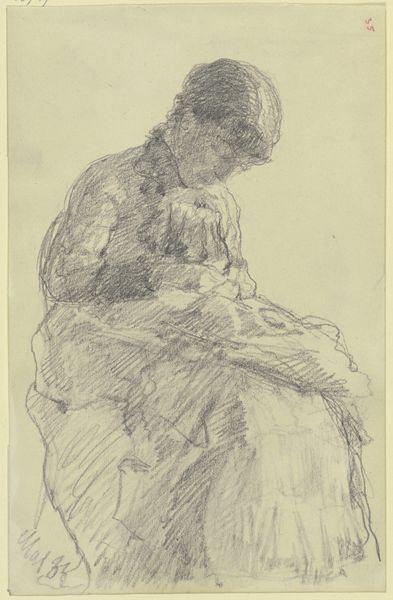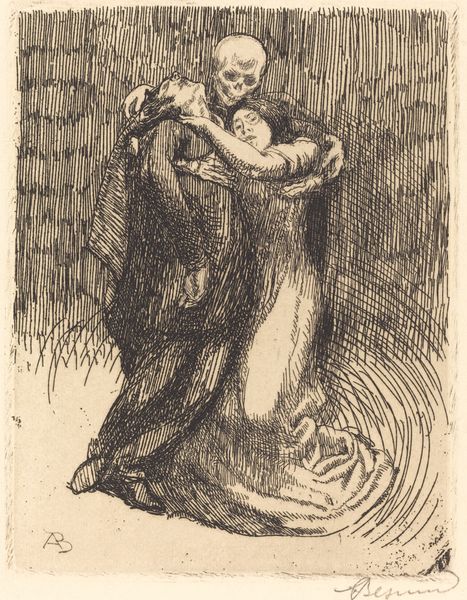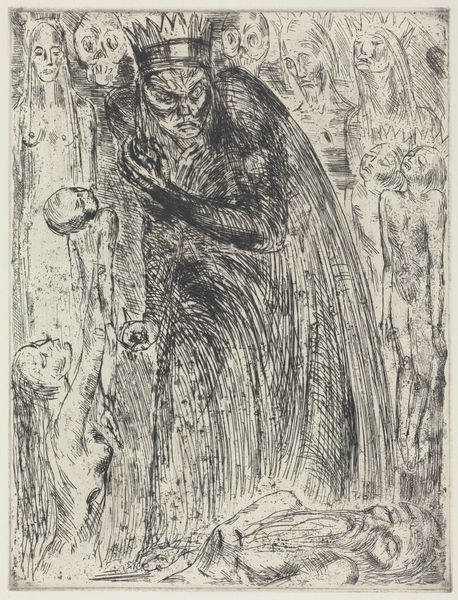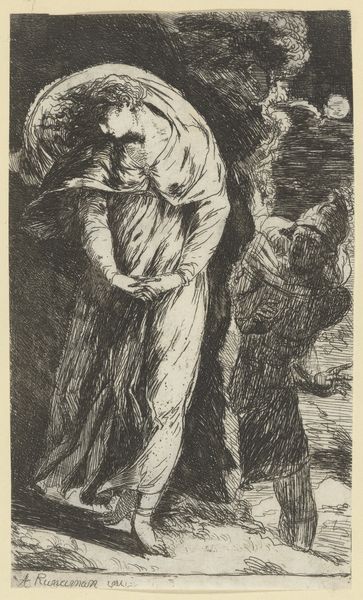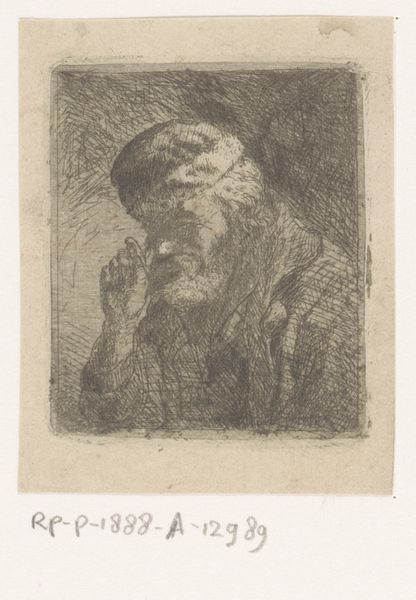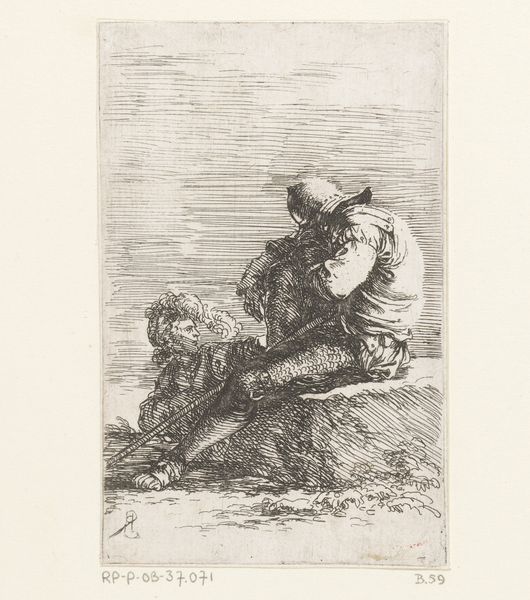
Copyright: National Gallery of Art: CC0 1.0
Editor: So, this is Jean-Louis Forain’s "The Return of the Prodigal Son (third plate)," from 1909, an etching. It feels… heavy, in a way. The contrast is stark, and the figures are so entwined. What do you see in this piece, beyond the immediate biblical reference? Curator: I see a poignant commentary on societal forgiveness, or perhaps, more accurately, the conditional nature of it. Consider the era: 1909, Europe steeped in class divisions and rapidly changing social mores. The prodigal son’s return isn’t just a personal redemption; it’s a challenge to the established order. Can a society truly embrace those who deviate from its norms? Editor: That’s interesting, I hadn't thought about it that way. The etching seems so focused on the intimate embrace, I almost missed the larger social context. Curator: Exactly. Look at the father's robe; it’s enveloping, almost suffocating. Is this acceptance or control? And the son, kneeling, head bowed – is it genuine remorse, or performative contrition dictated by patriarchal structures? What agency does he truly possess in this scenario? Forain, as an artist deeply embedded in his time, uses this biblical narrative to question the very foundations of societal judgment and acceptance, inviting us to reflect on contemporary structures of power and their effects on the individual. What is your interpretation of this? Editor: Wow. I initially saw a simple story of forgiveness, but now I see so many layers of power, social expectation, and perhaps even constraint, especially regarding gender and class. It has given me a lot to think about. Curator: Precisely. Art, even when depicting familiar narratives, has the power to ignite conversations about the complexities of the human condition within broader social contexts. Editor: I agree, I’ll never look at it the same way again. Thanks so much for sharing your thoughts!
Comments
No comments
Be the first to comment and join the conversation on the ultimate creative platform.


